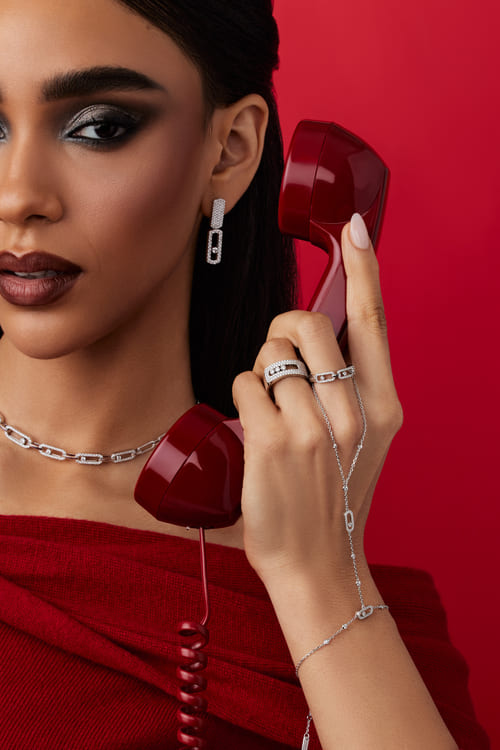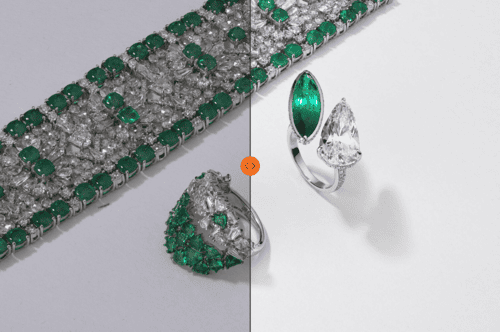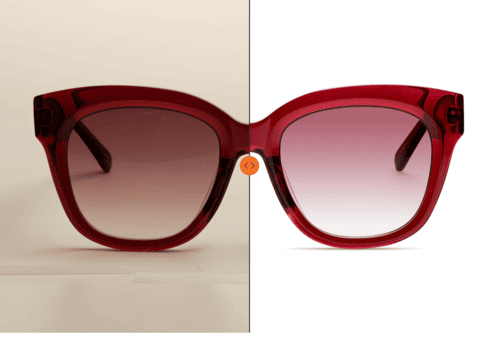Introduction to Mobile Phone Photography & Its Impact on Brands in E-Commerce
The rapid evolution of mobile phone photography has revolutionized how e-commerce brands create and use visual content. Once dismissed as a tool for daily life shots, today’s smartphones are equipped with advanced cameras capable of capturing images of decent quality. With features like high-resolution sensors, optical zoom, and AI-driven enhancements, smartphones now enable brands to create nice-looking content quickly and cost-effectively. This article explores the pivotal role of mobile photography in e-commerce, explores its key advantages, and outlines scenarios where professional photography remains indispensable.

The Evolution of Smartphone Photography
The story of smartphone photography is one of innovation, driven by the need for portability and quality. In the early 2000s, mobile cameras were a novelty — grainy, low-resolution sensors incapable of much beyond basic snapshots. Yet, they hinted at the potential for a device that could combine communication with creating visuals.
Modern devices, such as those from Apple and Samsung, offer features like high megapixel counts, optical zoom, and computational photography, making them more versatile for various photography needs than ever.
For retailers, these tools bridge the gap between accessibility and quality. Advanced software integration further enhances images, allowing even non-professionals to produce content quickly with a decent level of quality.
The Social Media Revolution in Mobile Photography
The rise of platforms like Instagram, TikTok, and Pinterest has fundamentally changed how brands interact with consumers. These platforms thrive on high volumes of visually compelling content, creating immense pressure on businesses to produce images that resonate. On-the-go photography with smartphones gives brands the agility to capture moments that feel authentic, relatable, and spontaneous. This style aligns with consumer preferences for genuine content. Social media’s emphasis on quick and relatable content makes smartphone photography a strategic tool for brands aiming to remain relevant and competitive in the fast-paced digital landscape.
Why Smartphone Photography Makes Sense for E-Commerce
Accessibility and Convenience of Phone Product Photography
Smartphones are always within reach, offering unmatched convenience for capturing visuals quickly. For e-commerce businesses, this accessibility means brands can respond swiftly to opportunities, such as creating content for flash sales, showcasing new products as they arrive, or showing the process behind-the-scenes.
However, the ease of smartphone photography can sometimes lead to inconsistent quality and lighting, especially without proper planning. While ideal for social media or spontaneous campaigns, businesses must weigh whether these quick shots align with their overall brand image and standards.
Cost-Effectiveness of Mobile Photo Solutions
Compared to professional photography setups, using a smartphone drastically reduces expenses. This is particularly advantageous for startups or small businesses working within tight budgets. With minimal investment in additional tools or apps, brands can produce high volumes of visual content. We invite fashion brands to explore cost-effective solutions by reading our article on 'Budget-Friendly Fashion Photography for Brands'.
Speed and Agility in Social Media Photography
Smartphone photography enables businesses to respond to trends, customer feedback, or market demands almost instantly. This agility ensures brands remain relevant in a highly competitive digital marketplace.
Phone Photography Trends in E-Commerce
1. The Rise of Authentic Visuals Through Mobile Photography
Modern consumers crave authenticity in the visuals they see online. The staged, overly edited with filters images of the past are being replaced with relatable, real-life snapshots. This trend emphasizes content that feels spontaneous and genuine, aligning with the preferences of today’s audiences who value connection over perfection. Both local brands and worldwide giants like H&M and Sephora have successfully embraced this trend, showcasing everyday moments and customer-centric visuals to build trust and engagement.
2. Natural Invisible Editing Trends in Smartphone Photography

While authenticity is key, subtle editing is often used to refine images while preserving a natural look. This trend, often called invisible editing, focuses on cleaning up small distractions, adjusting lighting, and enhancing overall harmony in an image. For instance, popular brands frequently use professional retouching services even for mobile photos to create consistency in visual branding without making images appear heavily edited. And you can follow their lead and order retouching from us! This ensures the content remains polished yet relatable, striking a balance between organic charm and professional appeal.
3. UGC and Candid Content Trends
User-generated content (UGC) continues to dominate as an effective e-commerce strategy. Encouraging customers to share photos or videos of products in real-world use provides brands with a steady stream of fresh, authentic content. Take Rhode as an example: they frequently feature UGC across their platforms, leveraging their loyal customer base to highlight product experiences. This approach fosters community engagement and drives sales, as consumers often trust peer recommendations over polished advertisements.
4. Short-Form Videos for Social Media
Short-form videos, fueled by platforms like TikTok and Instagram Reels, are shaping how brands tell stories. These bite-sized clips are engaging, memorable, and perfect for capturing attention in today’s fast-paced digital environment. A brand like Gymshark capitalizes on this trend by sharing workout tutorials, behind-the-scenes moments, and influencer collaborations. These videos, often shot on smartphones, showcase relatability while driving conversions. By focusing on concise yet impactful narratives, brands can connect with audiences and encourage immediate interaction.
Mobile vs. Traditional Photography for E-Commerce
Mobile photography offers cost-effectiveness and portability, making it a practical choice for certain types of e-commerce content. Brands often rely on smartphones for creating vibrant, engaging visuals for social media platforms like Instagram and TikTok, where immediacy, trend alignment, and relatability are key. It is also highly useful for capturing behind-the-scenes moments or showcasing temporary promotions with minimal setup time. However, its capabilities are limited when high-resolution detail or consistency across a portfolio of images is required.
Traditional photography, meanwhile, remains the gold standard for precision and depth. This method excels in crafting product galleries that require flawless lighting, intricate details, and consistency. For instance, luxury goods or high-value items benefit from the polish and expertise that professional setups provide. Branding campaigns often rely on traditional photography to ensure that visual assets convey the intended message with lasting impact.
By carefully assessing the goals of each project, whether it’s a quick social media post or a comprehensive branding campaign, businesses can determine the most effective photography approach. This strategic consideration allows brands to align their visual content with both their operational capabilities and their target audience’s expectations.
When Phone Photography is Enough for Online Retailers
- Social Media Content: Smartphone photography works well for creating dynamic, engaging visuals tailored to platforms like Instagram and TikTok.
- Seasonal or Temporary Promotions: Limited-time campaigns benefit from the speed and convenience of mobile photography.
- Behind-the-Scenes Content: Authentic glimpses into a brand’s process or culture are best captured candidly with a smartphone.
When Professional Photography Outshines Mobile Photography
- E-Commerce Website Product Galleries: For high-resolution, detailed images that influence purchase decisions, professional photography from professional visual content studios like LenFlash is essential.
- Luxury or High-Value Products: Premium items require polished visuals to convey their value.
- Branding Campaigns: Long-term assets demand the expertise and precision of professional photographers.
Want to know exactly what types of visual content your brand needs.html? Read our comprehensive guide to visual content for eCommerce!

Striking a Balance: Combining Mobile and Professional Photography
Case Studies of Successful Brands Using Mobile and Professional Photography
Leading e-commerce brands illustrate how mobile and professional photography can coexist to amplify a brand’s visual strategy. For example, IKEA showcases its furniture in dynamic and casual smartphone-based videos for platforms like Instagram, helping viewers visualize how their future furniture fits into real-life spaces. Meanwhile, their product catalogs and website galleries are meticulously curated with professional-grade imagery to ensure every detail is shown.
Similarly, Patagonia encourages customers to share their outdoor adventures through user-generated smartphone images on social media, creating a community-driven narrative. For their high-stakes seasonal campaigns or advertisements, however, they rely on professional photography to ensure the brand’s rugged, high-quality ethos shines through.

Tips for Deciding the Right Approach Between Mobile and Traditional Photography
- Understand Your Visual Goals: Define the purpose of your content. Social media posts thrive on the relatability of smartphone photography, while website galleries and advertising campaigns often require professional polish and detail.
- Budget Planning: Consider your resources. Mobile photography offers a cost-effective solution for everyday content, but allocate part of your budget to professional services for flagship campaigns or premium products.
- Test and Iterate: Monitor engagement metrics to determine which style resonates most with your audience. Experiment with mixing both approaches to find the balance that works for your brand.
The transformative role of mobile photography in e-commerce lies in its accessibility, speed, and practicality. By empowering brands to create agile, relatable content, smartphone photography has become a valuable tool for engaging audiences across dynamic platforms like social media.
Key Takeaway on the Role of Mobile Photography for eCommerce
While mobile photography offers unparalleled convenience and cost-effectiveness, professional photography remains indispensable for high-impact branding needs, such as detailed product galleries, luxury campaigns, and large-scale advertisements. Each approach serves a unique purpose in building a comprehensive visual strategy.
Experiment with mobile photography for agile content creation, but don’t compromise on quality when it matters most. When you need to present a polished, cohesive, and elevated image, such as for key website placements, product pages, advertising campaigns, or product launches, partner with experts like LenFlash and elevate your brand with professional-grade visuals for campaigns that leave a lasting impression.















